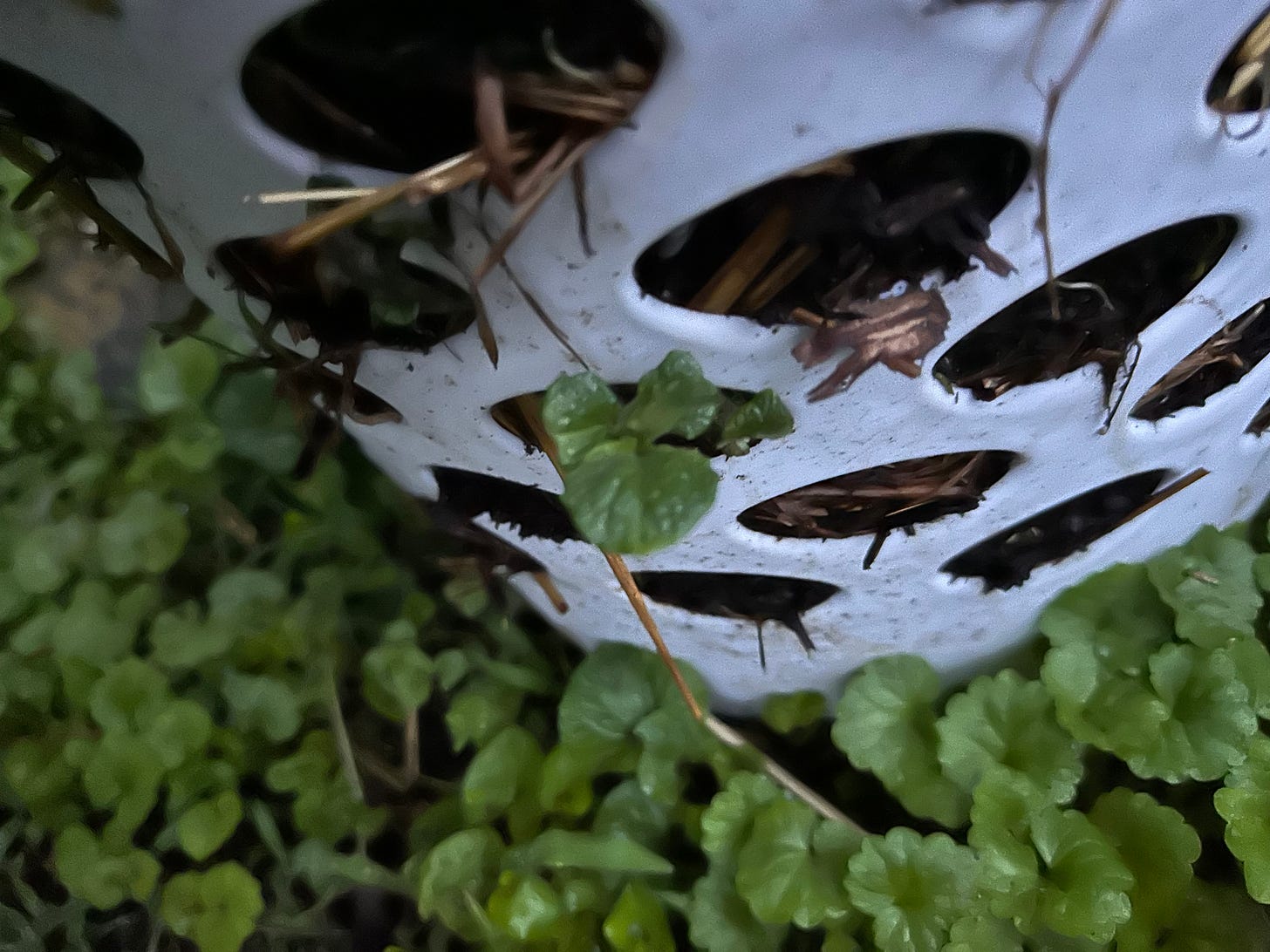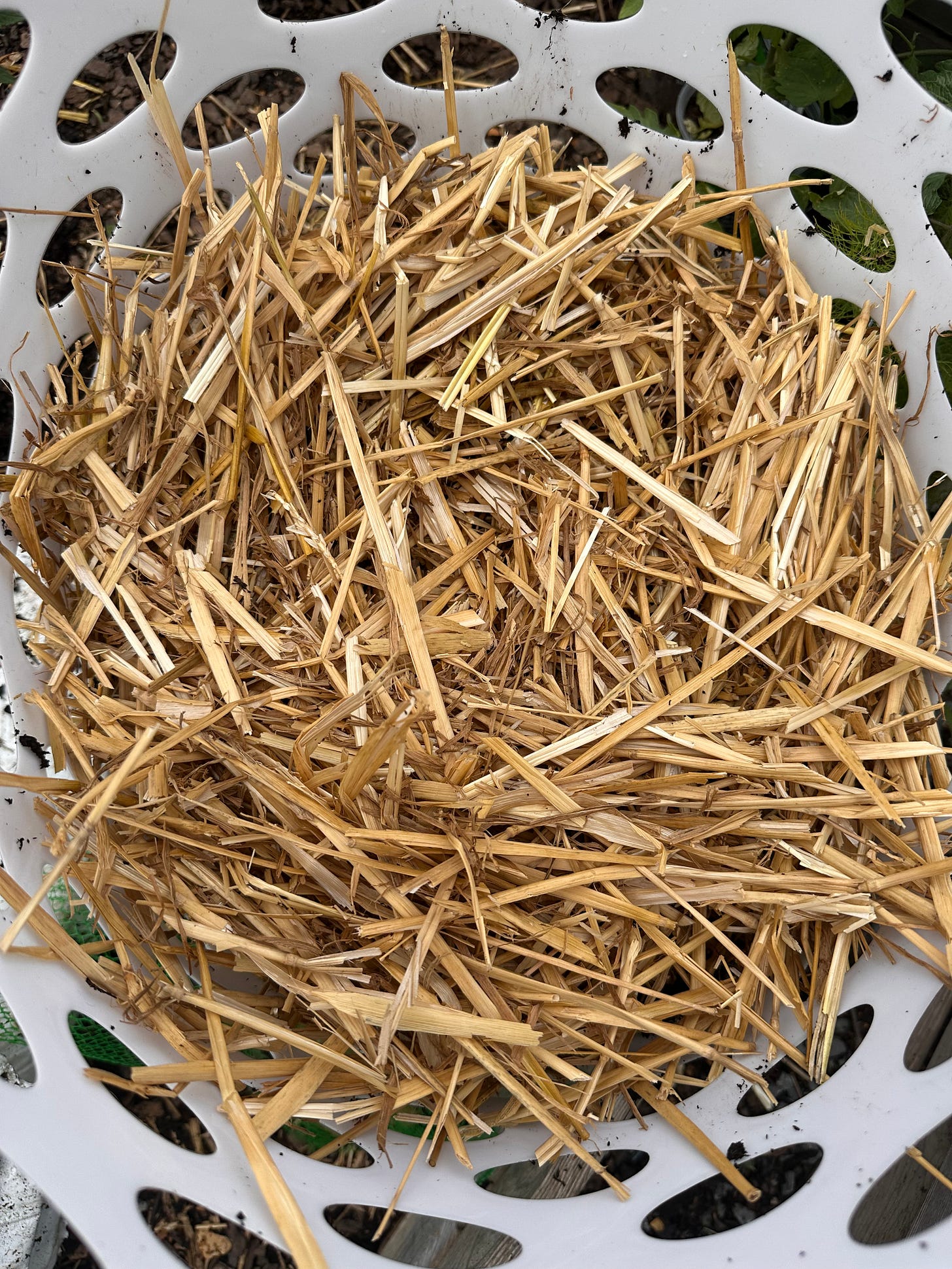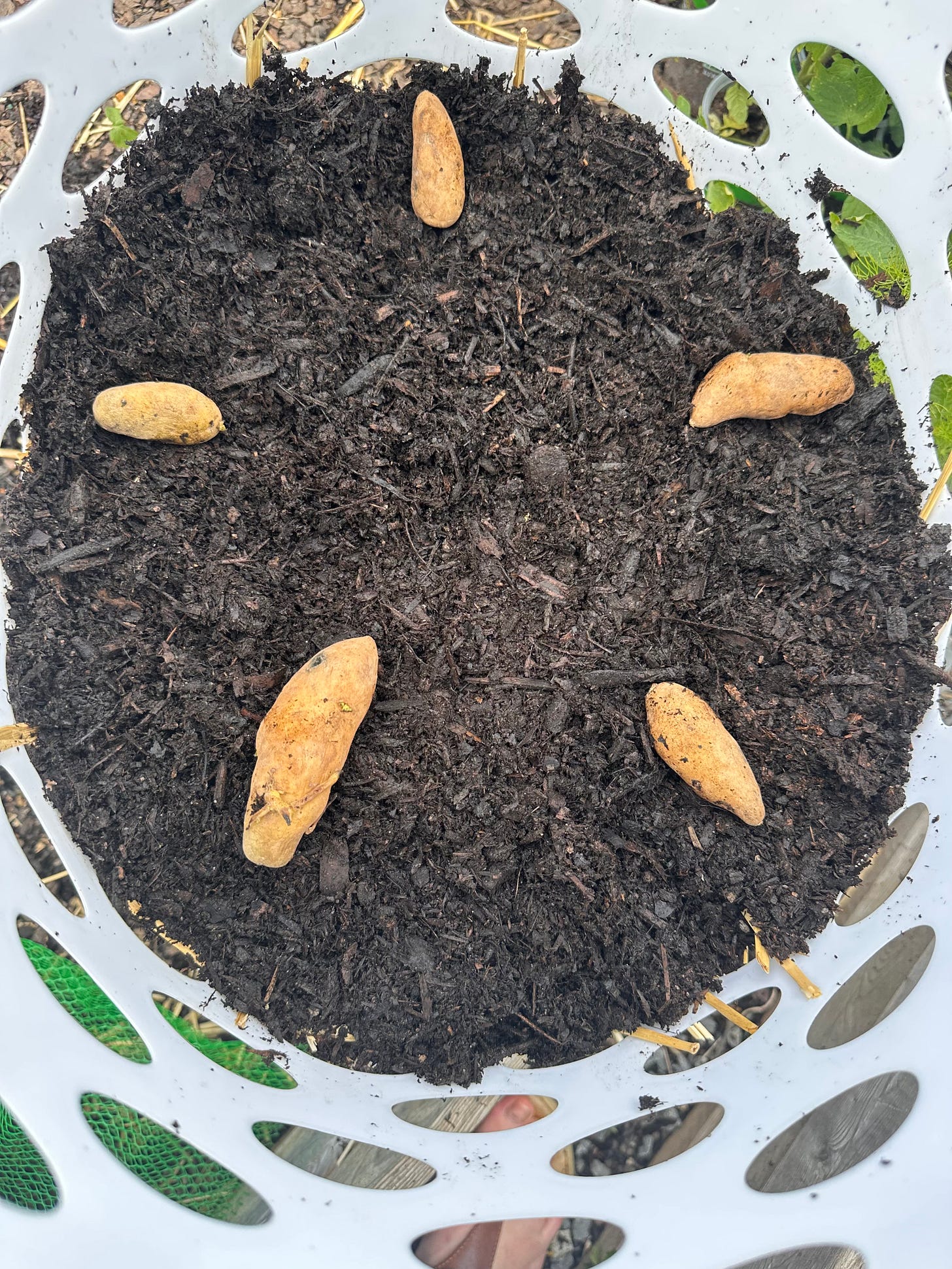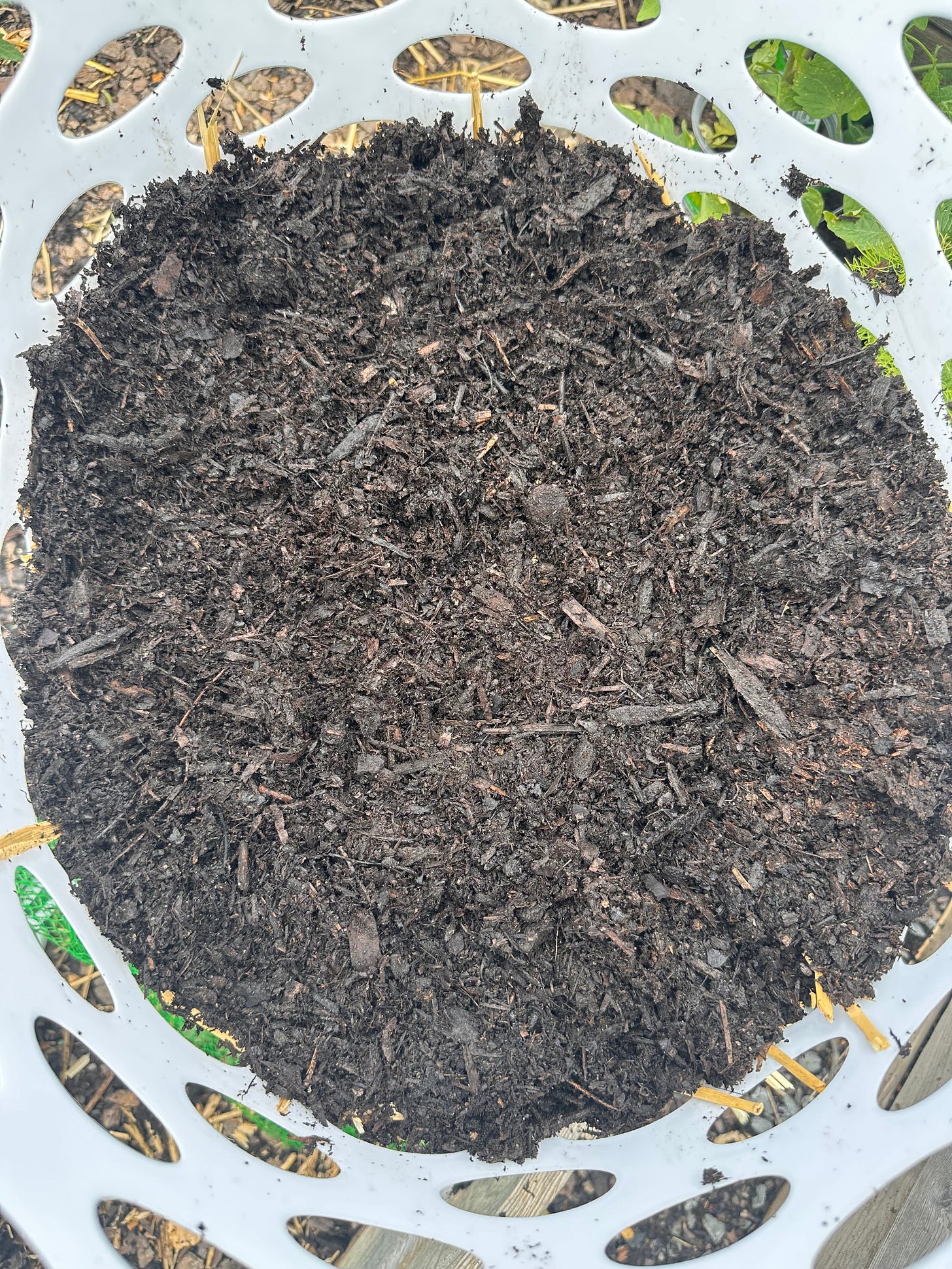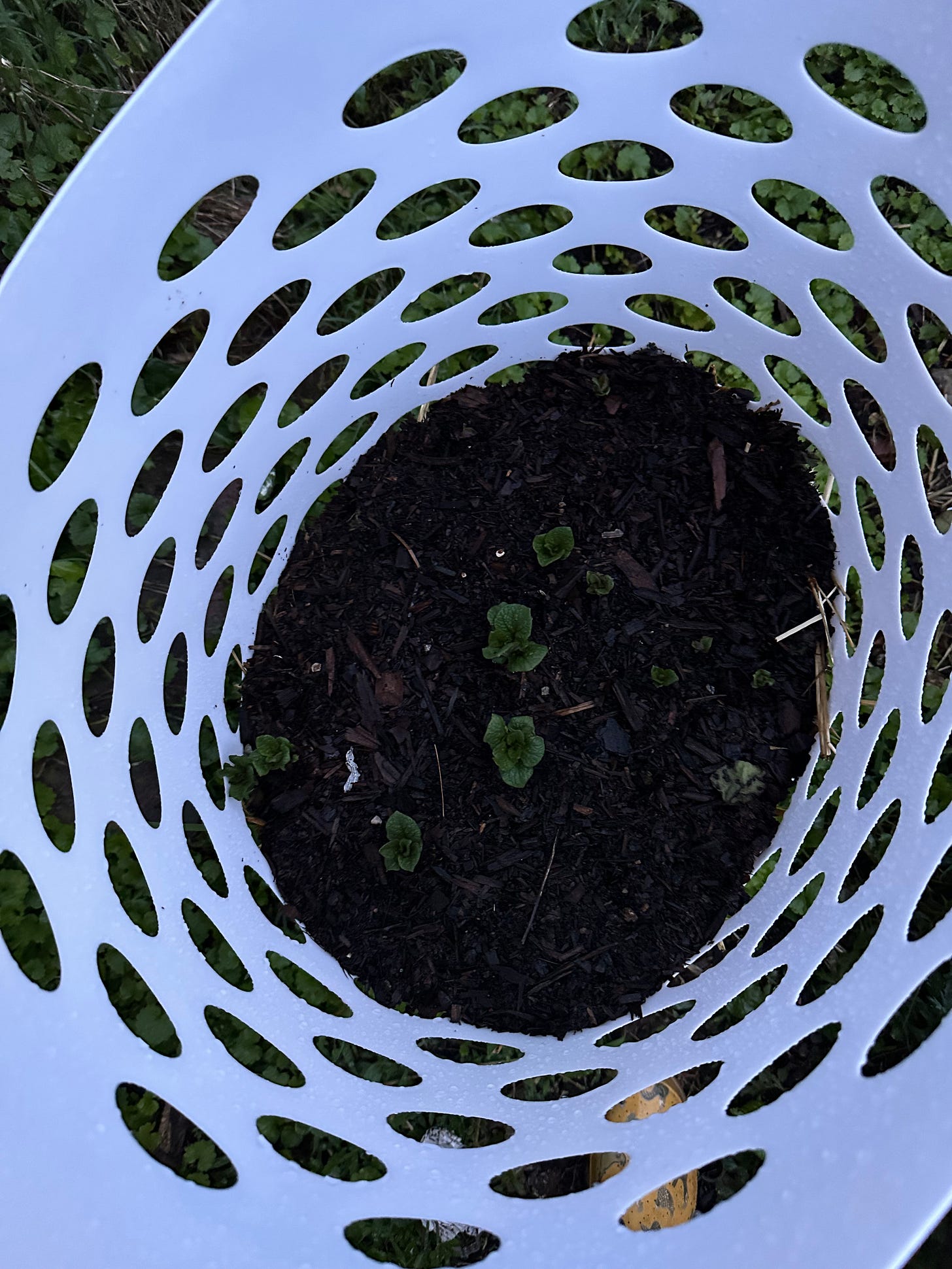Headless Frank Farms is about to enter its “season two,” but first — potatoes.
I’ve grown potatoes exactly once and it turned out okay, but it wasn’t particularly aesthetic. You’re technically supposed to grow them in the ground, but that’s just never worked out for me. I am not experienced at hoe-ing, and compacted dirt produces weird looking potatoes and downright explicit looking carrots (which, of course, makes the term hoe-ing appropriate for the endeavor).
Instead, I selected to grow the in bright orange Home Depot buckets.
Which made this years Wal-Mart laundry baskets downright bougie.
I spent $7 instead of $5. You can’t reuse the buckets anyway, because you have to drill holes in the bottom. Drilling holes in a laundry basket rarely produces problems unless you’re doing some very strange laundry (perhaps from hoe-ing).
The potatoes are coming in addition to what was already planned — a kitchen garden similar to what was in place last year but with the addition of a 20x20 wheat field that’s nearing harvest, an 8x20 “three sisters” plot — a subsistence plot that would, if sh*t hit the fan, allow us to survive a winter eating more than just beans, bean products, bean-related item, pickles, and hot sauce.
Growing now are Yukon Golds, which are a tasty feeder potato that has a slightly better consistency and flavor than Russet potatoes, and have a golden color that makes for pretty French fries and potato chips. And soon will be Princess Laratts and real purple sweet potatoes from Okinawa — not the crap kind you get at the market that’s dyed purple.
Anyway, we’re growing potatoes in laundry baskets.
The steps seem simple: buy laundry basket, drill a hole in the bottom for drainage and potential laundry aeration later, put a layer of straw, then a layer of dirt, then a layer of straw, then a layer of dirt with elderly potatoes.
Then more dirt to bury the potatoes, then a layer of straw.
Helpful GIF?!
Since potatoes are able to grow UP and OUT instead of down, you can add a layer of straw and a layer of dirt every time your potatoes break through the top and flower.
Theoretically, by the end of the summer, you will have a potato parfait that reaches to the top of the laundry basket and within, you will have plenty of edible potatoes.
Purchasing seed potatoes is not necessary for this step, but it can add an air of drama to the situation. Yukon Gold seed potatoes are pretty readily available at garden stores, and technically, any potatoes that have developed “eyes,” is just growing more of itself, so planting those potatoes will eventually yield more potatoes.
The trouble comes in when you want fancy potatoes, which cost quite a bit. Laratts ran about $30 for potato starts, and the purple sweet potatoes had to be drop shipped in to Nashville from a seller on Etsy, who had to get them overseas from Okinawa, at least originally, and was now growing them in Hawaii.
After spending hundreds on seeds and seedlings, I was adamant that we weren’t going to spend another $50 on potatoes. That, of course, meant that I would have to scour every overpriced organic grocery store in a thirty mile radius looking for French fingerling potatoes and purple sweet potatoes that weren’t “product of the USA.”
I never found them. And at some point my daughter, who accompanied me on this journey, started to complain about frostbite from the freezer sections. So we gave up.
Now, this doesn’t seem particularly dramatic, mostly because there was really no purpose in my challenging Burpee.com in a Mexican standoff. But to me, the thought of having any kind of drama over potatoes, just a few years ago, would have been completely foreign. Hell, sometimes I think about what I’d tell the me that graduated high school — you’ve had a successful thirty year career in law, politics, and journalism, and now you’ve retired to chase down organic potato starts for your backyard farm.
Oh, and you’re currently housing 16 chickens of varying ages in your sunroom.
You know all of their names.
Four potato baskets later, we’ve now begun the first round of planting this year. Olive trees seem to be producing, the fig trees didn’t survive the winter — admittedly because I forgot they existed — and I’ve cornered the market on small San Marzano plants in the greater Nashville area and I’m not even sorry about it.




